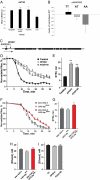Genome-wide association and genetic functional studies identify autism susceptibility candidate 2 gene (AUTS2) in the regulation of alcohol consumption
- PMID: 21471458
- PMCID: PMC3084048
- DOI: 10.1073/pnas.1017288108
Genome-wide association and genetic functional studies identify autism susceptibility candidate 2 gene (AUTS2) in the regulation of alcohol consumption
Erratum in
- Proc Natl Acad Sci U S A. 2011 May 31;108(22):9316. Esk, Tõnu [corrected to Esko, Tõnu]
Abstract
Alcohol consumption is a moderately heritable trait, but the genetic basis in humans is largely unknown, despite its clinical and societal importance. We report a genome-wide association study meta-analysis of ∼2.5 million directly genotyped or imputed SNPs with alcohol consumption (gram per day per kilogram body weight) among 12 population-based samples of European ancestry, comprising 26,316 individuals, with replication genotyping in an additional 21,185 individuals. SNP rs6943555 in autism susceptibility candidate 2 gene (AUTS2) was associated with alcohol consumption at genome-wide significance (P = 4 × 10(-8) to P = 4 × 10(-9)). We found a genotype-specific expression of AUTS2 in 96 human prefrontal cortex samples (P = 0.026) and significant (P < 0.017) differences in expression of AUTS2 in whole-brain extracts of mice selected for differences in voluntary alcohol consumption. Down-regulation of an AUTS2 homolog caused reduced alcohol sensitivity in Drosophila (P < 0.001). Our finding of a regulator of alcohol consumption adds knowledge to our understanding of genetic mechanisms influencing alcohol drinking behavior.
Conflict of interest statement
The authors declare no conflict of interest.
Figures

Comment in
-
Connecting the dots, genome-wide association studies in substance use.Mol Psychiatry. 2016 Jun;21(6):733-5. doi: 10.1038/mp.2016.14. Epub 2016 Mar 15. Mol Psychiatry. 2016. PMID: 26976040 No abstract available.
References
-
- World Health Organization Department of Mental Health and Substance Abuse. Global Status Report on Alcohol. Geneva: World Health Organization; 2004.
-
- Rehm J, et al. Global burden of disease and injury and economic cost attributable to alcohol use and alcohol-use disorders. Lancet. 2009;373:2223–2233. - PubMed
-
- Kaprio J, et al. Genetic influences on use and abuse of alcohol: A study of 5638 adult Finnish twin brothers. Alcohol Clin Exp Res. 1987;11:349–356. - PubMed
-
- Goldman D, Oroszi G, Ducci F. The genetics of addictions: Uncovering the genes. Nat Rev Genet. 2005;6:521–532. - PubMed
Publication types
MeSH terms
Substances
Grants and funding
- G0801056/MRC_/Medical Research Council/United Kingdom
- K05 AA017688/AA/NIAAA NIH HHS/United States
- G0700931/MRC_/Medical Research Council/United Kingdom
- G1000143/MRC_/Medical Research Council/United Kingdom
- G0601966/MRC_/Medical Research Council/United Kingdom
- MC_U106179471/MRC_/Medical Research Council/United Kingdom
- G0401527/MRC_/Medical Research Council/United Kingdom
- G0701863/MRC_/Medical Research Council/United Kingdom
- MC_U106188470/MRC_/Medical Research Council/United Kingdom
- G0600676/MRC_/Medical Research Council/United Kingdom
- K02 AA018755/AA/NIAAA NIH HHS/United States
- 090532/WT_/Wellcome Trust/United Kingdom
- G0901858/MRC_/Medical Research Council/United Kingdom
LinkOut - more resources
Full Text Sources
Other Literature Sources
Medical
Molecular Biology Databases
Research Materials

